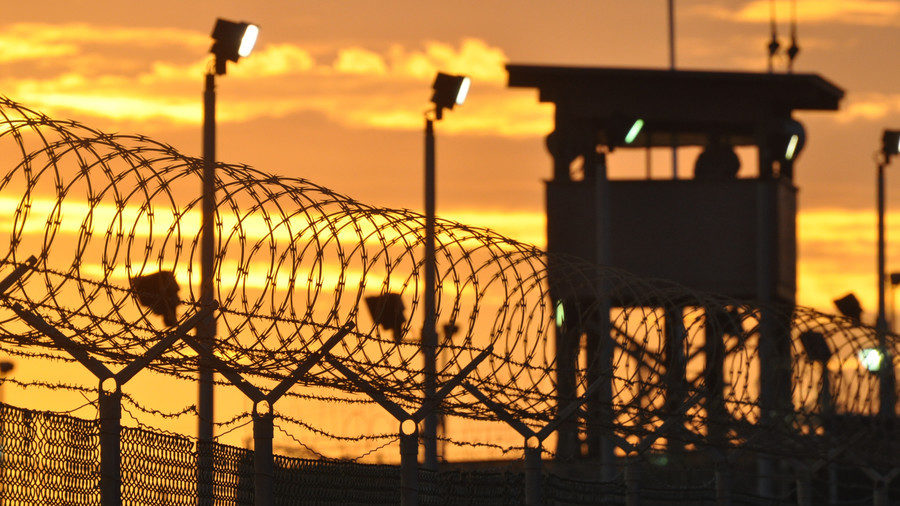
© U.S. Army Signal Corps / APThis file photo of a painting depicts street fighting during the siege of Monterey, Mexico in Sept. 1846 during the U.S. War with Mexico. The United States invaded Mexico in 1846 and captured Mexico City in 1847. A peace treaty the following year gave the U.S. more than half of Mexico's territory, what is now most of the western United States.
Venezuelan President Nicolas Maduro accuses the United States of trying to orchestrate a coup against him. While the U.S. says it's trying to rescue Venezuela's democracy, Washington has a long history of interventions - military and otherwise - in Latin American politics.
Since the advent of the Monroe Doctrine in the early 19th century, the United States has involved itself in the daily affairs of nations across the hemisphere, often
on behalf of North American commercial interests or to support right-leaning forces against leftist leaders.
That military involvement petered out after the end of the Cold War, although the U.S. has been accused of granting at least tacit backing to coups in Venezuela in 2002 and Honduras in 2009.
The Trump's administration leading role in recognizing Juan Guaido as the interim president of Venezuela returns the U.S. to a more assertive role in Latin America than it has had for years.
Some of the most notable U.S. interventions in Latin America:
1846: The United States invades Mexico and captures Mexico City in 1847. A peace treaty the following year gives the U.S. more than half of Mexico's territory - what is now most of the western United States.
1903: The U.S. engineers Panamanian independence from Colombia and gains sovereign rights over the zone where the Panama Canal would connect Atlantic and Pacific shipping routes.
1903: Cuba and the U.S. sign a treaty allowing near-total U.S. control of Cuban affairs. U.S. establishes a naval base at Guantanamo Bay.

© Michelle Shephard/Global Look PressCamp Delta prison located at US Naval Base Guantanamo Bay
U.S. Marines repeatedly intervene in Central America and the Caribbean throughout the first quarter of the 20th century, often
to protect U.S. business interests in moments of political instability.
1914: U.S. troops occupy the Mexican port of Veracruz for seven months in an attempt to sway developments in the Mexican Revolution.
1954: Guatemalan President Jacobo Arbenz is
overthrown in a CIA-backed coup.

© Rodrigo Abd / APMural in Guatemala City on 50th anniversary of CIA-backed military intervention in 1954 that ousted President Jacobo Arbenz
1961: The U.S.-backed Bay of Pigs invasion fails to overthrow Soviet-backed Cuban leader Fidel Castro but
Washington continues to launch attempts to assassinate Castro and dislodge his government.1964: Leftist President Joao Goulart of Brazil is overthrown in a U.S.-backed coup that installs a military government lasting until the 1980s.
1965: U.S. forces land in the Dominican Republic to intervene in a civil war.

© AP Photo/Eduardo Di BaiaIn this March 24, 1976 file photo, Argentina's dictator Gen. Jorge Rafael Videla, center, is sworn-in as president at the Government House in Buenos Aires, Argentina. With a world divided by the Cold War, South America's dictatorships in 1975 agreed to start exchanging information on political dissidents, trade unionists, students and any individual suspected of being leftist, in a campaign known as Operation Condor, often with U.S. support.
1970s: Argentina, Chile and allied South American nations launch
brutal campaign of repression and assassination aimed at perceived leftist threats, known as Operation Condor, often
with U.S. support.1980s: Reagan administration backs anti-Communist Contra forces against Nicaragua's Sandinista government and backs the Salvadoran government against leftist FMLN rebels.

© AP Photo/Doug JenningsIn this Oct. 27, 1983 file photo, soldiers brandish captured AK-47 rifles from the windows of a civilian vehicle as they drive near Point Salines Airport in St. George, Grenada. In 1983, U.S. forces invaded the Caribbean island of Grenada after accusing the government of allying itself with Communist Cuba. (AP Photo/Doug Jennings, File)
1983: U.S. forces invade Caribbean island of Grenada after accusing the government of allying itself with Communist Cuba.
1989: U.S. invades Panama to oust strongman Manuel Noriega.

© AP / Ezequiel Becerra- In this Dec. 26, 1989 file photo, U.S. soldiers take aim while searching suspects detained outside the home of a business associate of Manuel Noriega in Panama City. In 1989, the U.S. invaded Panama to oust strongman Manuel Noriega.
1994: A U.S.-led invasion of Haiti is launched to remove the military regime installed by a 1991 coup that ousted President Jean-Bertrand Aristide. The invasion restores Aristide.
2002: Venezuelan President Hugo Chavez is ousted for two days before retaking power. He and his allies accuse the U.S. of tacit support for the coup attempt.
2009: Honduran President Manuel Zelaya overthrown by military. U.S. accused of worsening situation by insufficient condemnation of the coup.









I Invade you, rape, murder, slaughter, etc, beat up on you.
Then you become my vassal.
History repeats.
Shalom